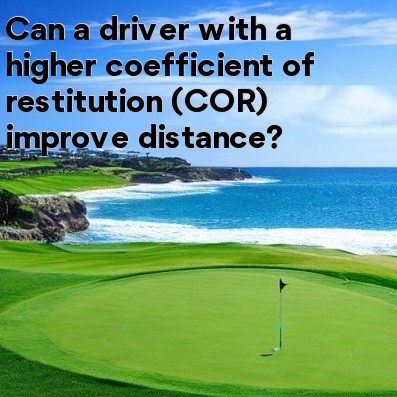
Can a driver with a higher coefficient of restitution (COR) improve distance?
Golfers are always on the lookout for ways to improve their distance off the tee. One factor that can play a significant role in maximizing distance is the coefficient of restitution (COR) of the driver. But what exactly is COR, and can a higher COR improve distance? Let's find out.
Understanding the Coefficient of Restitution (COR)
The coefficient of restitution measures the elasticity of a collision between two objects. In the context of golf, it refers to the ability of the clubface to transfer energy back to the golf ball upon impact. A higher COR means that the clubface is more efficient in returning energy to the ball, resulting in greater distance.
The USGA (United States Golf Association) has set a limit on the maximum allowable COR for drivers, currently at 0.83. This means that no driver can have a COR higher than 0.83 to conform to the rules of golf.
The Relationship Between COR and Distance
Generally, a driver with a higher COR has the potential to improve distance. When the clubface has a higher COR, more energy is transferred to the golf ball, leading to increased ball speed and reduced energy loss upon impact.
- Ball Speed: A higher COR allows the ball to retain more of the energy from the clubface, resulting in increased initial ball speed. Increased ball speed, in turn, leads to greater distance off the tee.
- Energy Transfer: A higher COR means that more of the energy generated during the swing is transferred to the ball. This increases the efficiency of the impact and reduces the amount of energy lost, thereby maximizing distance.
- Forgiveness: Drivers with a higher COR tend to be more forgiving on off-center hits. When the clubface flexes more, it can help compensate for mis-hits and still produce acceptable distance.
Other Factors to Consider
While a higher COR can potentially improve distance, it's essential to consider other factors as well.
- Swing Mechanics: The golfer's swing mechanics play a significant role in maximizing distance. A high COR alone cannot compensate for a flawed swing.
- Correct Loft and Shaft Flex: Finding the right combination of loft and shaft flex is crucial to optimizing launch conditions and maximizing distance. These factors should be considered alongside COR.
- Personal Preference: Ultimately, what matters most is the golfer's personal preference and confidence in a specific driver. It's essential to try out different options and choose the club that feels the best and inspires confidence.
In conclusion, a driver with a higher coefficient of restitution (COR) has the potential to improve distance off the tee. A higher COR allows for increased ball speed, efficient energy transfer, and forgiveness on off-center hits. However, it's important to consider other factors such as swing mechanics, correct loft and shaft flex, and personal preference when choosing a driver. Ultimately, finding the right combination that works for an individual golfer is key to maximizing distance and overall performance.





